
views
Preparing Dill for Eating
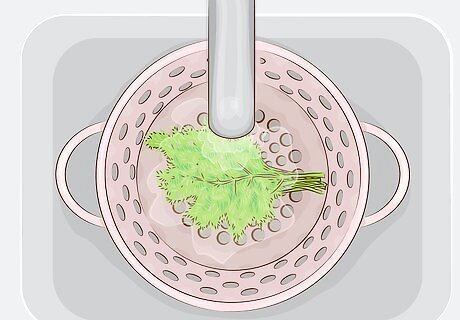
Wash the fresh dill. Transfer the dill bunch to a colander or strainer. Run clean water over the herbs to remove dirt and other residue. Transfer the washed dill to a clean towel and pat it dry to remove excess moisture.
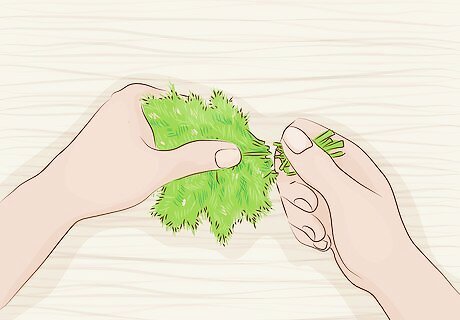
Remove the large stems. When the dill is dry, transfer it to a cutting board. With a sharp knife, carefully cut off the larger stems that all the fronds (the feathery leaf-like parts of the herb) are attached to. You can either discard these stems, or save them to add flavor to other dishes. Dill stems can be used to stuff and flavor meats and fish, to season stocks and soups, or even to enhance the dill flavor of pickles. Like bay leaves, dill stems should be removed from a dish before serving.
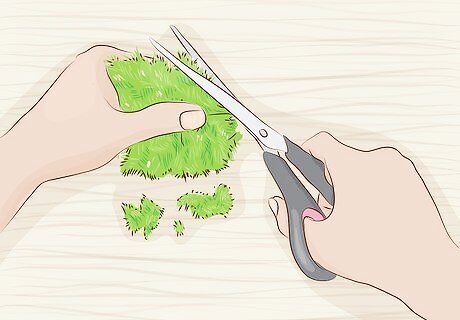
Cut the fronds into smaller pieces for garnish. Dill makes an excellent garnish for soups, salads, and meats. As a garnish, you may want to use longer sprigs of dill fronds rather than minced dill. With a pair of small, sharp scissors, trim 1-inch (2.5-cm) sprigs from the fronds to use for garnishing dishes. The leafy sprigs make much better garnish than the stems, so remove any stems from the garnish and add them to the dill that you'll be mincing.
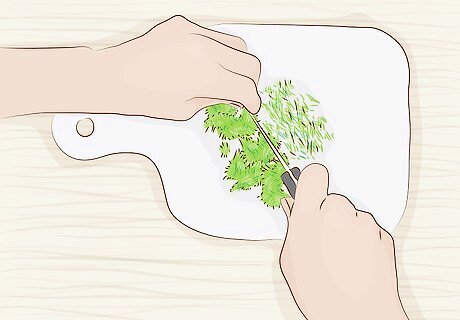
Mince dill for cooking. Minced fresh dill is ideal for cooking, baking, making sauces, and even eating raw — since it doesn't really require cooking. Transfer the remaining dill, including the small stems and fronds, to a cutting board. Use a sharp knife to mince the dill into very small pieces.
Pairing Dill with Specific Foods
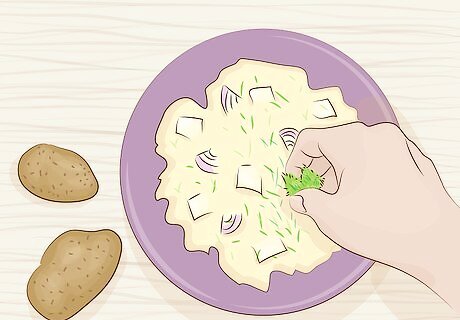
Spruce up any kind of potato dish. Dill is very commonly paired with potatoes, and you can use dill with any variety of potato and in any potato-based dish. For a mild dill flavor, use about ¼ cup (6.25 g) of dill per 2.5 pounds (907 g) of potatoes. Some of the most common ways to pair dill and potatoes include: Mix it in with a creamy potato salad Sprinkle it on French fries or potato wedges Cook it with roasted potatoes
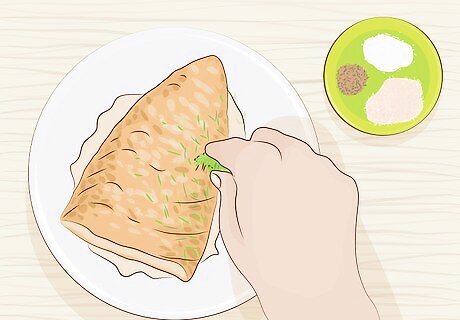
Give fish an extra fresh punch. Fish is another food that’s often served with dill (and lemon), and salmon in particular. Drizzle fresh lemon juice over the salmon and bake it in a 350 F (177 C) oven for about 25 minutes. When the salmon is flaky and pink, remove it from the oven. Before serving, season the salmon with: ¼ teaspoon (0.75 g) garlic powder Salt and pepper, to taste 1 tablespoon (1.6 g) fresh minced dill
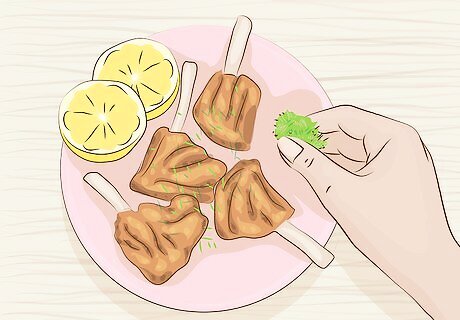
Finish lamb with lemon and dill. Lamb, dill, and lemon is another classic food combination, and there's something very delicious about savory meats garnished with mild herbs like dill. Grill, roast, bake, or barbecue the lamb, and before serving, garnish each portion with 1½ tablespoons (2.3 g) of fresh dill and a sprinkle of fresh lemon juice. Lamb served with dill and lemon can be paired with roasted potatoes.

Use dill to season borscht. Dill is found in most recipes for borscht, which is a sour beet soup that’s popular in Eastern European countries like Russia and Poland. Some recipes may call for parsley instead, but you can always use dill in borscht. While dill is commonly used in borscht, you can actually add it to any soup you like, including turkey, cream of mushroom, broccoli, beef and vegetable, tomato, and more.

Bring out the flavor of eggs. There are a variety of egg dishes that are often paired with dill, and just like with potatoes, there's no egg dish that you can't successfully add dill to. Some of the most popular egg and dill combinations include: Egg salad Omelets Quiche Scrambled eggs Deviled eggs Fritata
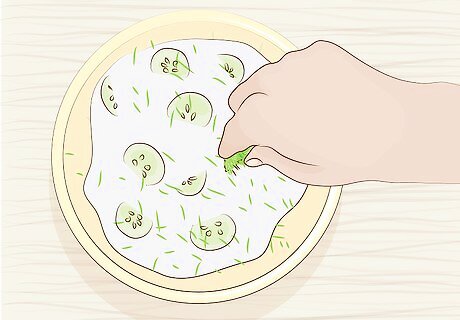
Pair dill with yogurt and cucumbers. Dill is highly popular as an herb for both yogurt and cucumbers. In fact, the combinations are so popular that tzatziki, a Greek sauce, uses all three. To make your own tzatziki: Cut a medium cucumber in half lengthwise and remove the seeds Grate the cucumber with a cheese grater Sprinkle salt over the cucumber and transfer it to a colander to drain overnight Transfer the cucumber to a clean towel and pat it dry In a bowl, combine the cucumber, two cloves of minced garlic, 2 tablespoons (30 ml) of olive oil, 2 cups (490 g) of Greek yogurt, and one small bunch of minced fresh dill Add a sprinkle of fresh lemon juice and stir to combine all the ingredients Serve the tzatziki with pita, bread, vegetables, or meats
Using Dill in Cooking and Baking
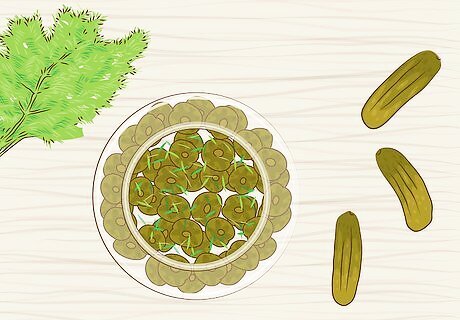
Pickle your own dill cucumbers. Dill pickles are possibly one of the most popular ways that people eat dill. Although it’s easy enough to buy pickles in the store, you can also make your own dill pickles at home for an extra special treat. Next time you make a batch, try adding dill seeds, flowers, stems, or fronds to the brine. You can add dill to any pickled vegetables, including beets, onions, and asparagus.
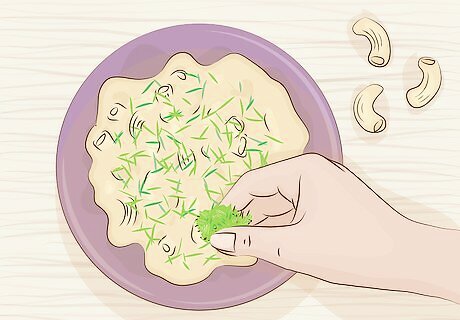
Add it to your mac and cheese. Dill and cheese is another great food combination, and you'll often find dill in herbed cheese mixes. Dill also makes an excellent additional to macaroni and cheese, or any other pasta dish. Next time you make a batch of macaroni and cheese or cheese and rice, spruce it up with dill by adding: A tablespoon (6.25 g) of fresh dill A teaspoon (0.5 g) of dill weed Havarti dill cheese as a substitute for the cheese in the recipe
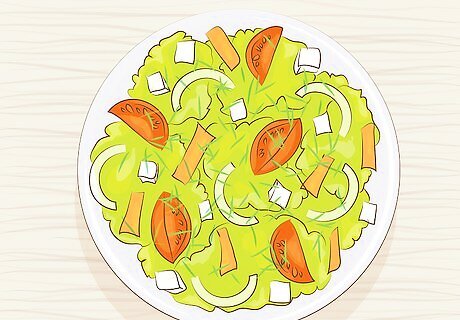
Garnish salads with fresh dill. Because fresh dill has such a mild flavor, it can easily be added raw to salads without being overpowering. You can add minced dill to any salad or dressing, or garnish your favorite salads with small sprigs of fronds. Excellent salad choices for dill include: Garden or garden Cobb Greek Bean Pasta Fruit
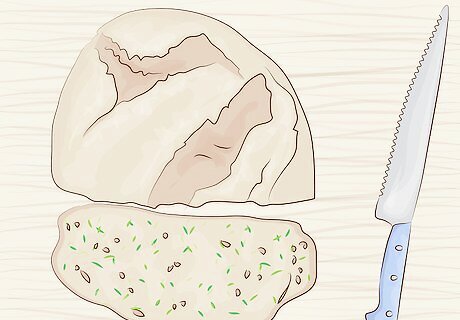
Liven up breads and scones. Dill can be added to just about any scone or bread recipe you like, though it’s most popular with cheese scones and cheese bread. To turn your baked goods into dill baked goods, simply add ½ cup (12.5 g) of minced dill to your favorite recipes. Instead of using all dill, you can also use ¼ cup (6.25 g) of dill and ¼ cup (6.25 g) of chives.
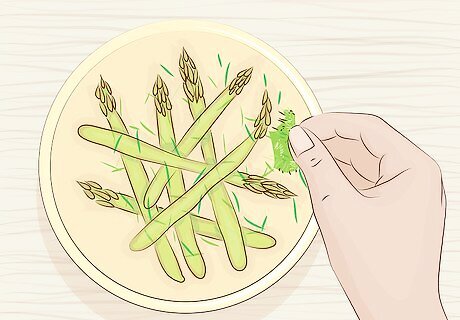
Spice up your vegetables. Fresh dill is a great way to cook or finish vegetables, and the herb is especially tasty when paired with lemon and vegetables. Ways you can add dill to your veggies include: Sprinkle it on roasted asparagus Roast potatoes, peppers, carrots, and other vegetables with dill Garnish raw, steamed, or stir fried vegetables with sprigs of fronds
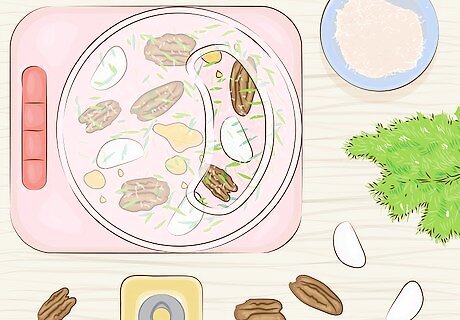
Whip up a dill pesto. Pesto is often made with basil, but you can use the same method to make a delicious and fresh dill pesto. Dill pesto is great on sandwiches, in pastas, as a dip, on flatbread, or even tossed with vegetables. To make this spread, pulse in a food processor until smooth: 1 cup (25 g) fresh dill 1 large clove garlic ¼ cup (31 g) parmesan cheese ¼ cup (31 g) lightly toasted pecans ¼ cup (59 ml) olive oil




















Comments
0 comment